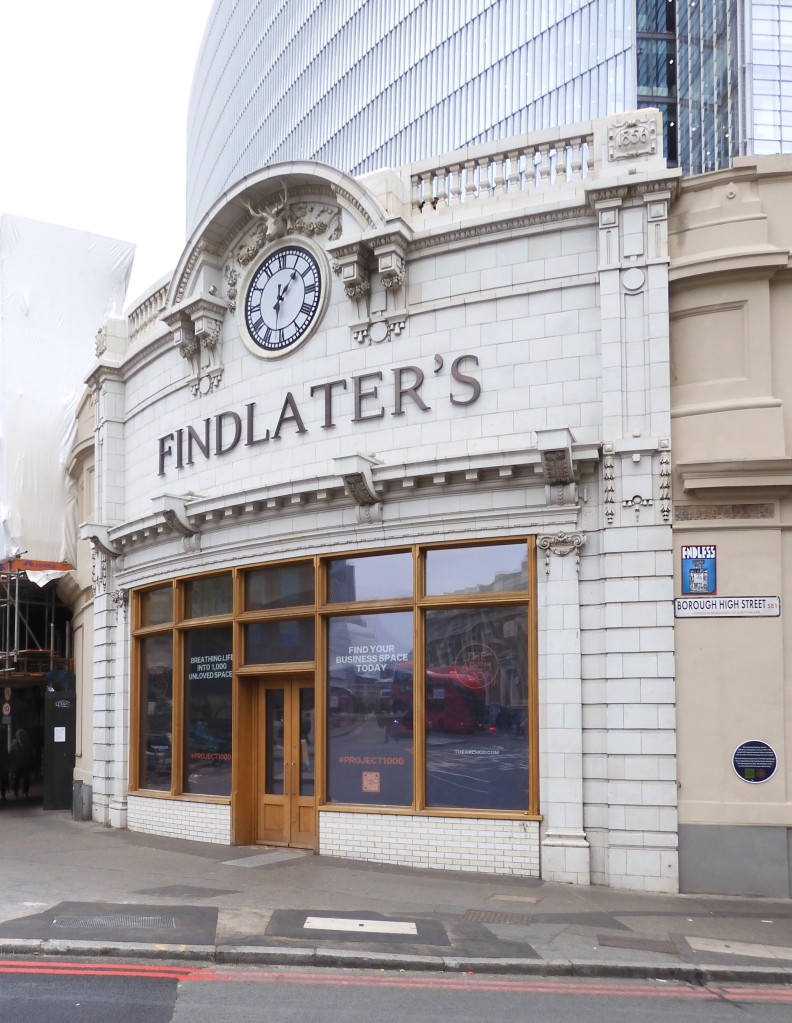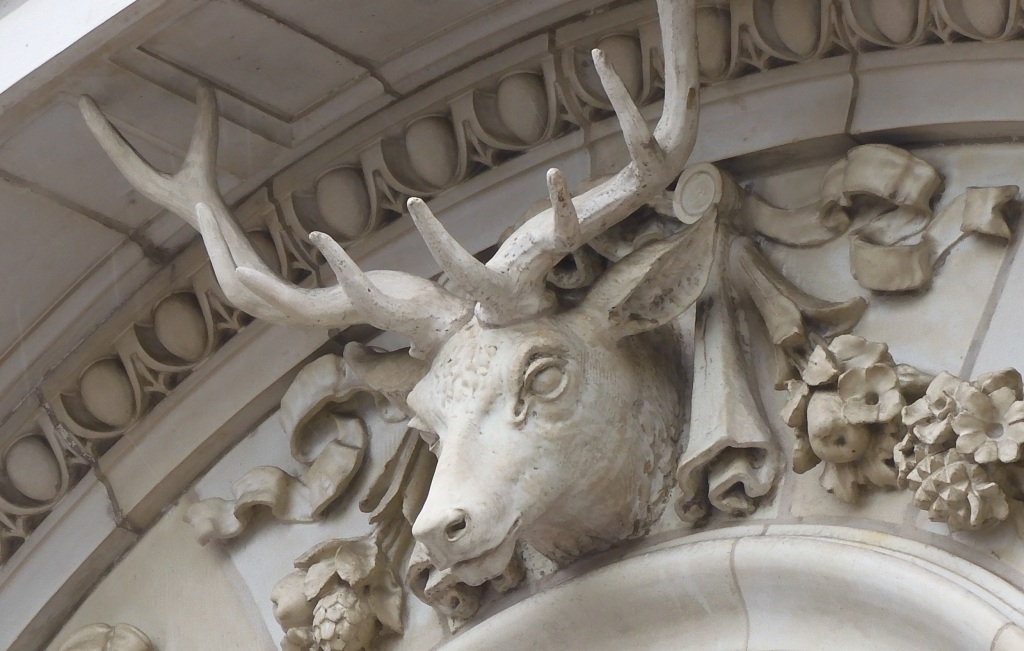
Findlater’s Corner – a prominent site on the western approach to London Bridge railway station – was restored to its original glory by The Arch Company, working with Benedict O’Looney Architects, in 2022. The result is impressive. Important aspects of the building’s history, however, have been misunderstood.
This landmark site is named after the wine and spirit dealer, Findlater, Mackie, Todd & Co., which moved into new premises beneath the recently completed railway line (linking London Bridge with Charing Cross) in 1863. The shop was named the ‘London Bridge Stores’.
Above arched windows typical of the trade, a shaped parapet displayed a clock and proclaimed the name of the company in bold lettering. The distinctive appearance of Findlater’s Corner appears to have influenced the stores of an Irish chain of licensed grocers, A. Findlater & Co., which were often adorned with raised pediments and boxy clocks.

Findlater, Mackie, Todd & Co. was one of several wine and spirits dealerships established by the Scotsman Alexander Findlater (1797-1873) in partnership with other businessmen. Partnership was a common mechanism for expansion before the formation of limited liability companies became widespread.
After opening his Irish & Scotch Whiskey Stores in Dublin, in 1826, Findlater became one of the first multiple retailers in the British Isles. He began trading in England in 1838 through Findlater & Mackie in Manchester and Findlater, Mackie & Co. in Strand, London, followed in 1856 by Findlater, Mackie, Todd & Co. This started at 215 Tooley Street before moving to the corner of Borough High Street, under the railway arches. The firm branched out through London and the South-East under the control of the Todd family.
Findlater, Mackie, Todd & Co. occupied the corner shop beneath the arches for over a century. At some point during its occupation, the premises were redeveloped. Publicity surrounding The Arch Company’s project dated the glazed terracotta (or faience) frontage to c.1897 and described it as ‘Victorian’. The c.1897 date was repeated on a round plaque installed on the building in January 2023. This may relate to a Francis Frith postcard of 1897. Although this shows the 1863 frontage still in situ, there seems to have been an assumption that the premises were remodelled shortly after the photograph was taken.
A date of c.1897 would have made Findlater’s highly precocious, predating the onset of the style commonly called Edwardian Baroque and foreshadowing the more pared back neo-classicism of the 1920s.

Inspired by scepticism, further light digging has revealed that Findlater’s frontage was created in 1922 – a date much more compatible with its general appearance. By pleasing happenstance, it was therefore restored exactly 100 years after its original creation.
Work to replace the mid-Victorian façade was undertaken in September 1922 by the owner of the site, the South Eastern Railway (SER), for their long-term tenant. The SER staff architect, Charles Edward Mercer (1869-1925), designed the frontage. It was executed in distinctive grey-coloured Carrara ware by Doulton & Co. By this time many other retailers – including the provision dealer David Greig – were erecting Carrara ware façades in a similar style, with lingering touches of Edwardian Baroque tempered by neo-classicism.
Findlater’s shopfront was designed by the well-known shopfitter, Parnall & Sons. Construction was carried out by Courtney & Fairburn of Camberwell, with steelwork supplied by Moreland, Hayne & Co of Farringdon.

A stag’s head crowned Findlater’s new façade. This has been interpreted as a nod to the founder’s Scottish roots but, much more importantly, it advertised Findlater’s most popular brand of wine and spirits: Stag’s Head.
In March 2024, at the time of writing, it has been announced that Findlater’s Corner will soon be occupied by a branch of the supermarket chain, Oseyo, which specialises in Korean foods. Its restoration has given the site a new lease of life.
Derived from research carried out for Kathryn A. Morrison, Chain Stores in the Golden Age of the British High Street, Liverpool University Press, 2025 (forthcoming). Photographs copyright Kathryn A. Morrison.
Sources: Illustrated London News, 7 Feb 1863, 160; Builder, 8 September 1922, 351; Alex Findlater, Findlaters – the story of a Dublin merchant family 1774-2001, Dublin, 2001.

pub on deansgate, bolton, the nags head. hepworths bought it, opened the shop on the ground floor, storage rooms above. cellars became the lower nags head, tailors pub, only place i could get a pint at 16. last time i was in bolton it was santander bank, next must have come and gone ________________________________
LikeLike
after hepworths, next, dont really know how true, but i was told, anyone over 25 doesnt fit our new image, older than that and you are out the door
i wonder, does anyone else remember, hepworths thought themselves a cut above burtons, jacksons, whoever else. but we were scared as hell when marks and sparks introduced tailoring ________________________________
LikeLike